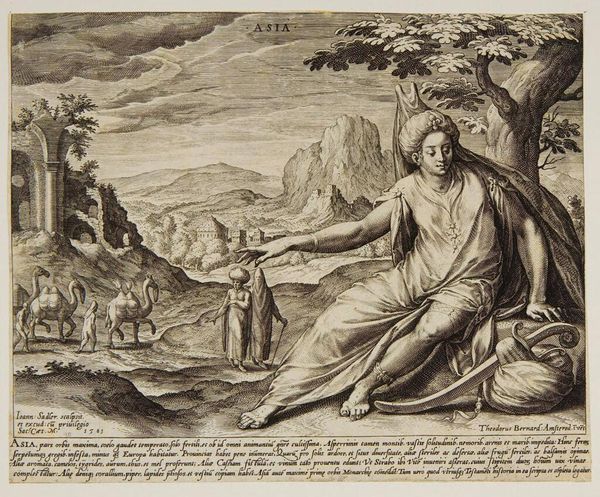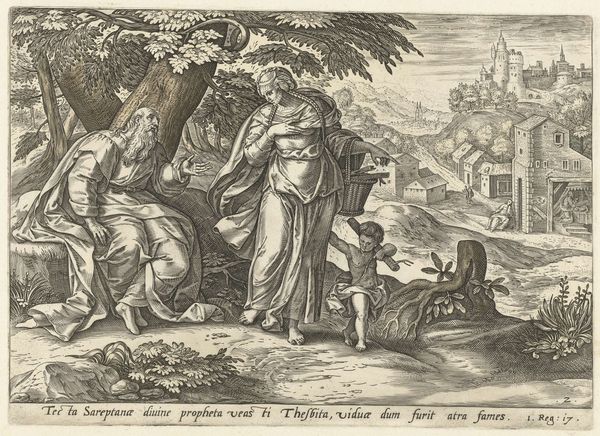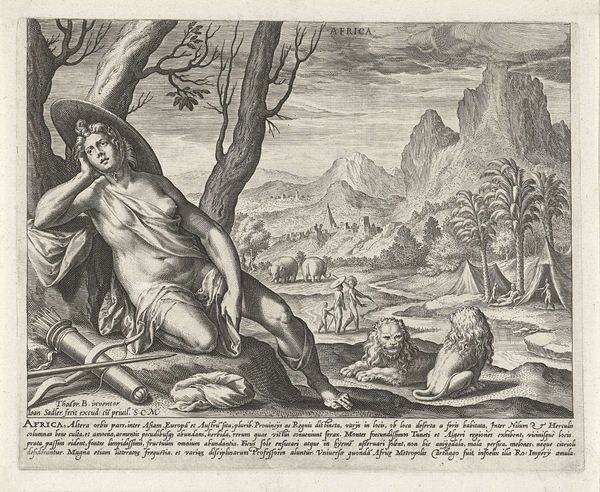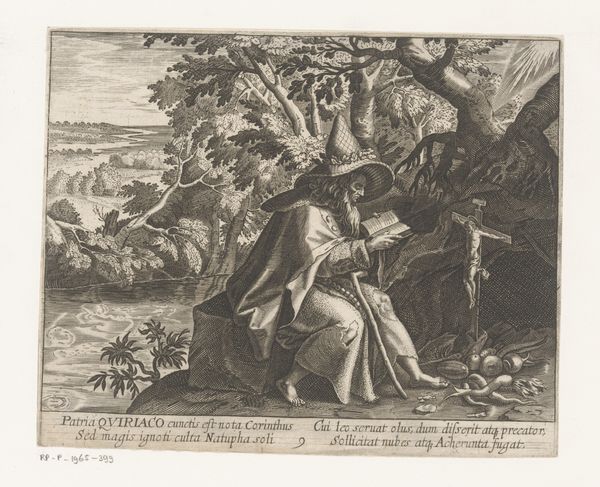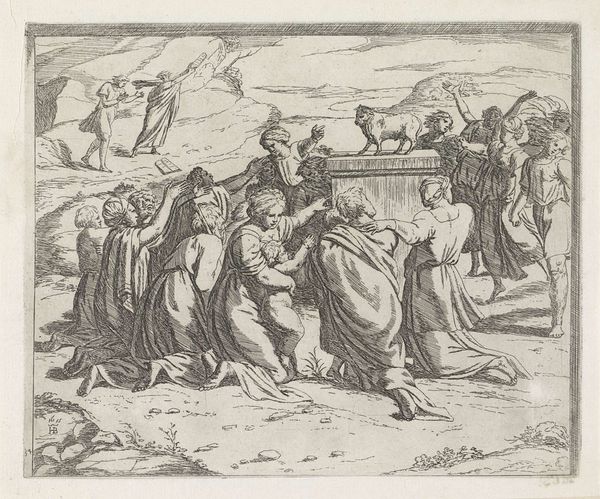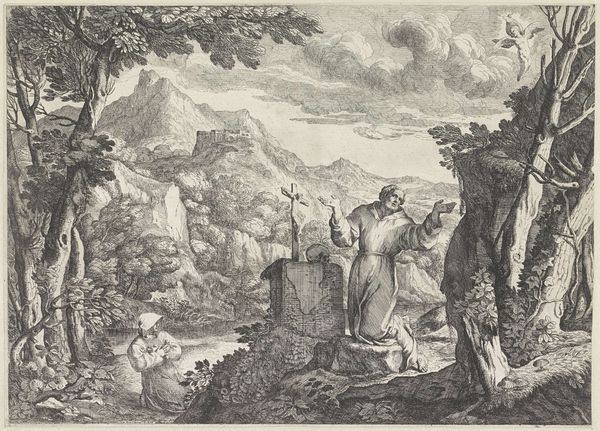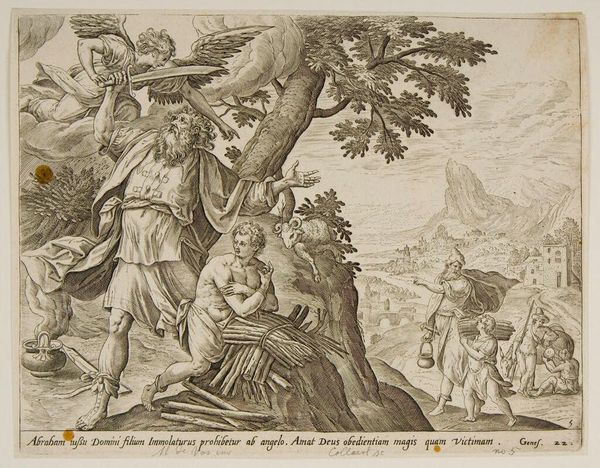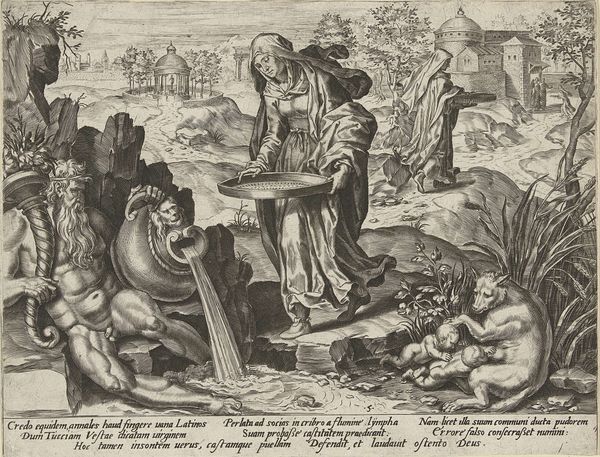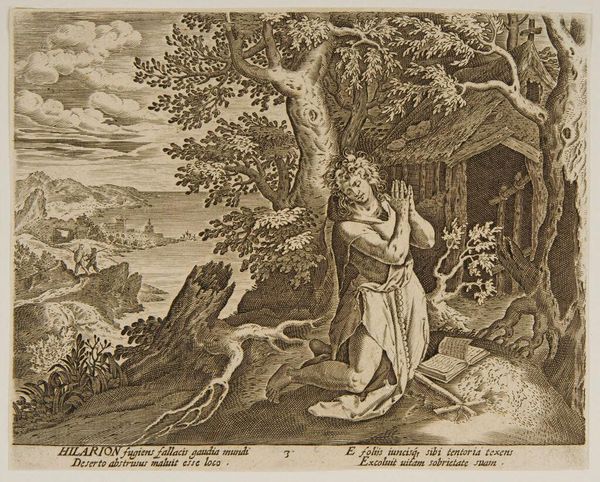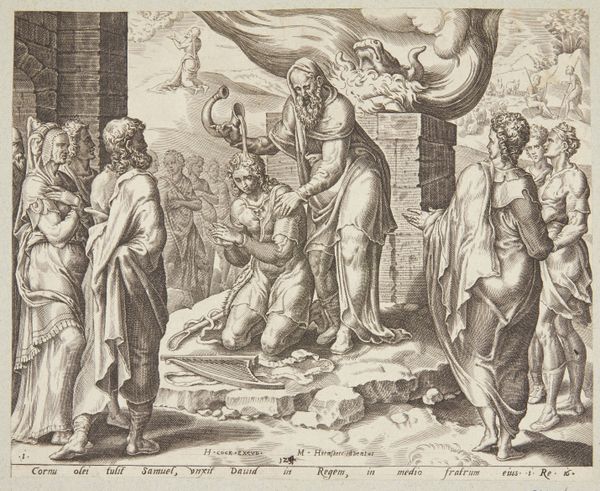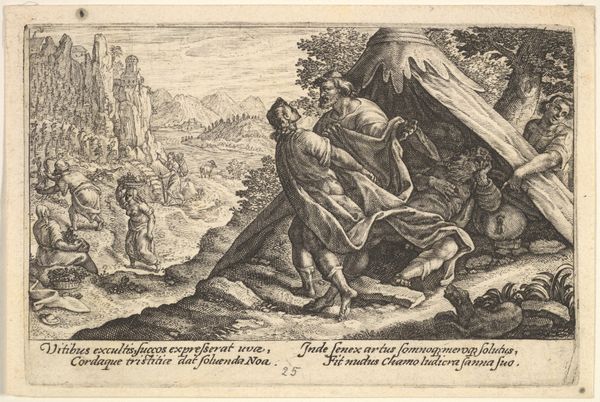
print, engraving
#
allegory
# print
#
old engraving style
#
landscape
#
mannerism
#
figuration
#
history-painting
#
academic-art
#
engraving
Dimensions: height 183 mm, width 232 mm
Copyright: Rijks Museum: Open Domain
Curator: This is Johann Sadeler I’s engraving "Azië," created in 1581, currently held at the Rijksmuseum. It's an intriguing example of Mannerist allegory. Editor: Immediately striking! The intricate detail in the engraving style creates a captivating sense of depth and texture. It seems to portray Asia as a reclining figure amidst a stylized landscape. Curator: Indeed. The female figure is Asia, and the engraving presents a vision of the continent rooted in European perceptions. Note the landscape behind her - part idyllic, part rugged. These images circulated as commodities and shaped perceptions. Editor: Absolutely. I'm drawn to the details within the composition—the camels, the architecture in the distance, and her gesture towards the turbaned figures. It is meticulously rendered, with each element carefully placed to guide the viewer’s eye. The interplay of light and shadow adds to the dramatic feel. Curator: Consider also how this image might have been made and circulated. Printmaking relied on workshops, patronage, and global trade networks for materials like paper and ink. The "academic-art" style reflects a market for sophisticated consumers. Editor: The idealized depiction of the central figure raises questions of representation, too. It speaks to European constructs of an exoticized “Asia,” fitting within the artistic conventions of the period. Her calm detachment is intriguing, contrasting against the detailed landscape behind. Curator: Exactly. And her clothing and jewels contribute to the allegorical image and perhaps to the value and marketability of this printed image as an object. How was value and "truth" being communicated through prints at the time? Editor: Ultimately, by carefully attending to formal choices and historical context, we see beyond face value to the socio-political undercurrents shaping the work’s meaning. Curator: And understanding the work that went into producing, circulating and, ultimately, assigning meaning to a piece such as this.
Comments
No comments
Be the first to comment and join the conversation on the ultimate creative platform.
